
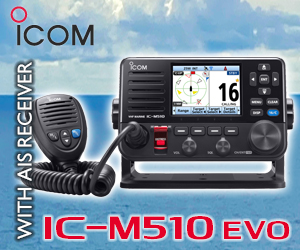






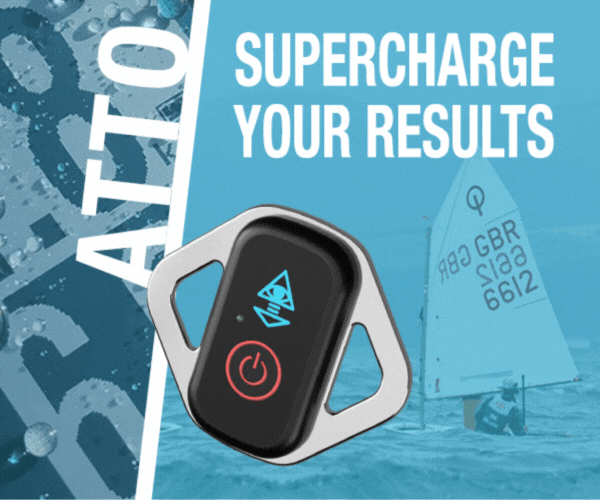
-(1)-202408140552.gif)
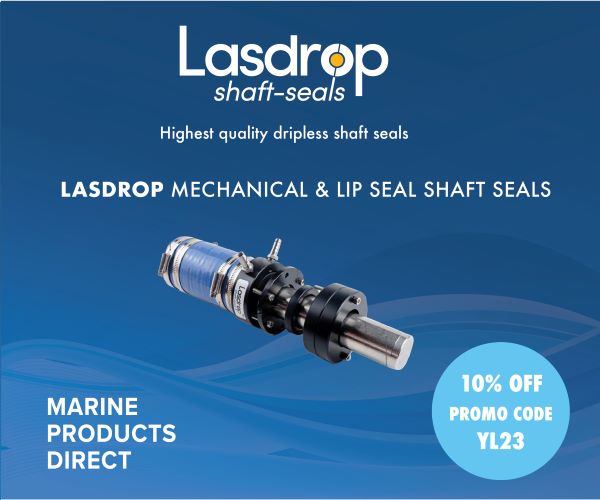

Boats for sale
| Rossiter Pintail Mortagne sur Gironde, near Bordeaux |
 |
| Laser 28 - Excellent example of this great design Hamble le rice |
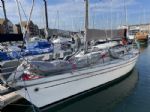 |
List classes of boat for sale |
Square tops |
Post Reply 
|
Page <1 910111213> |
| Author | ||
CT249 
Far too distracted from work 
Joined: 08 Jul 06 Online Status: Offline Posts: 399 |
 Post Options Post Options
 Quote Quote  Reply Reply
 Topic: Square tops Topic: Square topsPosted: 08 Jun 22 at 9:22am |
|
Nope, or not from my experience owning and sailing a couple of them. The cat don't need as much gust response as their higher upwind speed means that a gust is a lower percentage of apparent windspeed. They also (as far as I can recall) use flatter sails than skiff types, so it needs actual less twist and mast bend to create a similar depowering effect. I've never seen my F16 or F18 clew rise or come in to windward, personally. The mainsheet loads are way too high. We took the mainsheet off our old 20' cat and stuck it on the 36' 5 ton offshore mono we have, and it's easier to work on that than it was on the cat! The proof may come in A Class cats. They have had extremely light carbon wingmasts, rather than stiff alloy rigs, for eons. Despite the fact that they could probably design in as much bend as they want (ie by shifting from carbon to 'glass etc) they have extremely straight masts - so straight that they don't use halyards at all but just push the sail straight up the mast from the bottom because there is basically no luff curve to create resistance. But (AFAIK) the mainsail chord is so flat that the minimal amount of mast bend created by downhaul pressure is enough to completely flatten the sail when needed. Mono sails are still deeper (AFAIK) so have more draft to be taken out so need more mast bend. This is just my belief and there are many people who know much more; I'll grab one of them when our season starts again.
Edited by CT249 - 08 Jun 22 at 9:42am |
||
 |
||
CT249 
Far too distracted from work 
Joined: 08 Jul 06 Online Status: Offline Posts: 399 |
 Post Options Post Options
 Quote Quote  Reply Reply
 Posted: 08 Jun 22 at 9:17am Posted: 08 Jun 22 at 9:17am |
|
|
[/QUOTE] Square tops are in a sense just a modern interpretation of the traditional gaff rig. But is it only carbon masts that they work with, that can flex and produce the desired 'gust-response'.... or can they work with aluminium/much stiffer spars? Or could batten technology ensure that they do? (spring loaded battens!)...... [/QUOTE] With respect; I"ve spent a lot of time researching design history, and there seems to be little evidence that squaretops and gaffs have much to do with each other at all. The traditional gaff rigs almost never used gust response in anything like the way we do, and that comes from a LOT of reading of books and articles from the 1800s and early 1900s. The gaff's advantages were due to low centre of effort, fewer problems in keeping the stick aloft and things like that. After reading many hundreds of pages (my mag collection dates back to 1894) I can find no information that indicates that gust response was seen to be better with gaffs than with contemporary bermudans. The gaff rigs were almost always low aspect, whereas squaretops tend to be fairly high in aspect ratio. The gaffs normally had too much twist, way more depth than we use, and were sailed at wider angles of attack upwind and downwind. In cats like the Taipan 4.9, which has a very big and stiff wingmast even for a cat, the former large roach gave way to a squaretop over a decade ago, and the class opinion was that the gust response was very much better. To give an idea of the stiffness of the 4.9 mast, Glenn Ashby (who was a champ in them before he was famous) told me that the mainsheet load on the 96kg 16' Taipan 4.9 was higher than that of the vastly larger Tornado - and yet the very flat squaretop on the 4.9 gives good gust response. You don't need much movement when the head is already very, very flat. Incidentally the Taipan's co-designer Greg Goodall is credited by many (like sailmaker Ben Hall in an old article in US mag Sailing World) with introducing the true squaretop in an A Class that his brother used to win the worlds in back in the '80s. Greg followed on by also winning two world titles in the class, but if I recall correctly he reckons the increase in squaretop area is (like so many things) largely down to improved materials that allow sailmakers to make sails that don't distort and therefore suffer from leaches that either blow open or slam shut. I haven't seen him in years so this is just from memory. Edited by CT249 - 08 Jun 22 at 9:51am |
||
 |
||
eric_c 
Far too distracted from work 
Joined: 21 Jan 18 Online Status: Offline Posts: 382 |
 Post Options Post Options
 Quote Quote  Reply Reply
 Posted: 08 Jun 22 at 9:12am Posted: 08 Jun 22 at 9:12am |
|
|
The H2 has a PN of 1034? The Phantom, with almost no roach at all, 1004. Blaze with a big round roach, 1033. Dzero 1029 It's not looking like sailing's answer to nitrous oxide is it?
|
||
 |
||
H2 
Really should get out more 
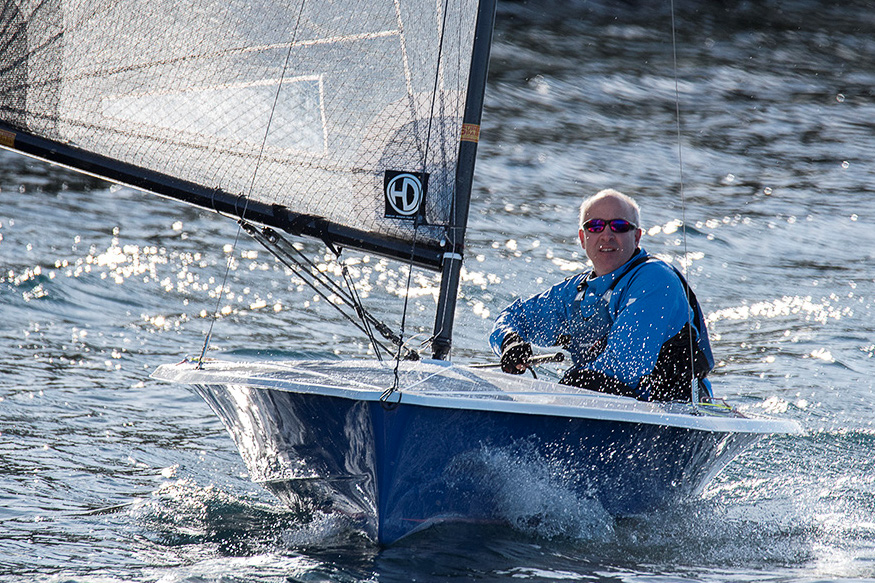
Joined: 26 Jul 17 Online Status: Offline Posts: 750 |
 Post Options Post Options
 Quote Quote  Reply Reply
 Posted: 08 Jun 22 at 8:31am Posted: 08 Jun 22 at 8:31am |
|
The H2 was a new class designed with a square top from the outset. The rig was designed by Jim Hunt from HD sails and not a man I would use the words "aesthetics or commercialisation" in connection! Of course it is possible that you are a respected founder of a sail loft and multiple world champion TT - I know I am not - but I reckon Jim designed a rig that he felt would work well rather than look pretty.
|
||
|
H2 #115 (sold)
H2 145 OK 2082 |
||
 |
||
The Q 
Posting king 
Joined: 07 Feb 22 Location: Norfolk Broads Online Status: Offline Posts: 126 |
 Post Options Post Options
 Quote Quote  Reply Reply
 Posted: 08 Jun 22 at 6:28am Posted: 08 Jun 22 at 6:28am |
|
|
I think on the Norfolk Punt it's a case of getting sail area up high as in many areas of the broads we are badly affected by trees.
Many of the Broads cruisers have jackyard tops'ls, some now have them permanently fitted, so their only reefing is at the bottom.. The Merlin has a Size limit (10sqm?) so for them by moving as much area as they can up high, they should get stronger clearer winds. Currently on my one off, I'm using an old Kestrel Sail (and mast), that has a long top batten, a sort of semi square top. Even with just that it sometimes decides to stay curved the wrong way, needing a sharp tug on the main to "pop" it. When the new sail made I was thinking of going square top, but my one off is very round bilged with little form stability and also I need to move the sail area aft a bit. So now my current thinking is she needs a longer boom and just go for a conventional top.. But there's another couple months trials needed before a final decision needs to be made. |
||
|
Still sailing in circles
|
||
 |
||
Oatsandbeans 
Far too distracted from work 
Joined: 19 Sep 05 Location: United Kingdom Online Status: Offline Posts: 382 |
 Post Options Post Options
 Quote Quote  Reply Reply
 Posted: 08 Jun 22 at 5:06am Posted: 08 Jun 22 at 5:06am |
|
|
I agree-the reason that the mid leach has such an effect on pointing is that it effects the upwash on the air hitting the jib luff. Having a mid leach close to the centre line makes the wind in front of the jib bend -in effect giving you a lift. If you ease the main and the mid leach moves away from the centre line you lose this.
|
||
 |
||
JimC 
Really should get out more 

Joined: 17 May 04 Location: United Kingdom Online Status: Offline Posts: 6661 |
 Post Options Post Options
 Quote Quote  Reply Reply
 Posted: 07 Jun 22 at 9:47pm Posted: 07 Jun 22 at 9:47pm |
|
|
Yes, one of the key things is the mid leech. If the mid leech doesn't stand up then the boat won't point. So in my dream world the top of the sail would flop off completely and the bottom 2/3 of the sail wouldn't move an inch. AFAIK that's pretty much unachievable, but with all full battens and stable cloth it goes a substantial way towards.
Overrotating rigs march to an utterly different drummer because the mast tip bends up to windward... |
||
 |
||
ohFFsake 
Far too distracted from work 
Joined: 04 Sep 08 Location: United Kingdom Online Status: Offline Posts: 219 |
 Post Options Post Options
 Quote Quote  Reply Reply
 Posted: 07 Jun 22 at 9:33pm Posted: 07 Jun 22 at 9:33pm |
|
|
If you watch the (truly excellent) 18 footers tv coverage on youtube, and pick a windy race you'll see plenty of examples of what they jokingly refer to as "flappage".
This is the top section of the fully battened mainsail completely inverting in the gusts, so the battens more or less pop the wrong way. This is probably the clearest demonstration you will ever see of automatic gust response, and explains at a glance the whole reasoning behind square top sails. In the gusts the bottom half of the sail is providing drive with leach tension giving good pointing, whilst the top of the sail is completely feathered for minimal drag and heeling moment. Edited by ohFFsake - 07 Jun 22 at 9:36pm |
||
 |
||
eric_c 
Far too distracted from work 
Joined: 21 Jan 18 Online Status: Offline Posts: 382 |
 Post Options Post Options
 Quote Quote  Reply Reply
 Posted: 07 Jun 22 at 8:17pm Posted: 07 Jun 22 at 8:17pm |
|
|
Re H2 Yes that's helpful. Maybe that's general to sails with a lot of roach rather than being specific to flat-head, I've seen a few sails which are hard to make sense of when the wind gets too light. Some boats you can leave the kicker off in light air because the sheet gives the right blend of pulling the boom across and leach tension. A lot of factors than can't be isolated from one another, too many variables.
Edited by eric_c - 07 Jun 22 at 8:22pm |
||
 |
||
turnturtle 
Really should get out more 
Joined: 05 Dec 14 Online Status: Offline Posts: 2538 |
 Post Options Post Options
 Quote Quote  Reply Reply
 Posted: 07 Jun 22 at 7:59pm Posted: 07 Jun 22 at 7:59pm |
|
|
I always understood square tops were a development class thing to maximise sail area with a constraint on spar length in the class rules
If a new one design class has been developed with one, then it probably has more to do with aesthetics and commercialisation than good sail design More than happy to be corrected if this isnít true!! Edited by turnturtle - 07 Jun 22 at 8:00pm |
||
 |
||
Post Reply 
|
Page <1 910111213> |
| Forum Jump | Forum Permissions  You cannot post new topics in this forum You cannot reply to topics in this forum You cannot delete your posts in this forum You cannot edit your posts in this forum You cannot create polls in this forum You cannot vote in polls in this forum |
Bulletin Board Software by Web Wiz Forums® version 9.665y
Copyright ©2001-2010 Web Wiz
Change your personal settings, or read our privacy policy
Copyright ©2001-2010 Web Wiz
Change your personal settings, or read our privacy policy












 Printable Version
Printable Version Delicious
Delicious Digg
Digg Facebook
Facebook Furl
Furl Google
Google MySpace
MySpace Newsvine
Newsvine reddit
reddit StumbleUpon
StumbleUpon Twitter
Twitter Windows Live
Windows Live Yahoo Bookmarks
Yahoo Bookmarks Topic Options
Topic Options